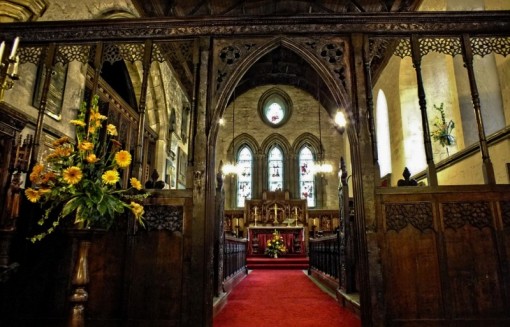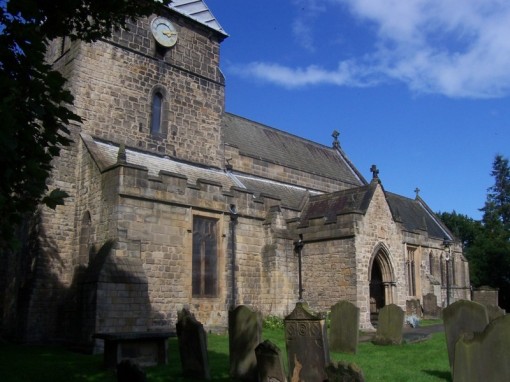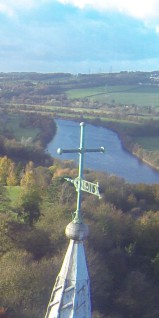Architectural Gem, Idyllic Setting, Rich History.
The Heritage Pages open up these treasures. Enjoy!
Summary of its features.
The church was completed around 1220, built on the ‘bailey’ of a motte and bailey castle which had guarded the tidal ford across the River Tyne. This strategic position on the river was most likely the reason for a significant settlement developing here in the early middle ages.
The church is Grade I Listed. The Churchyard contains Grade II listed table tombs and lamp posts, and the motte is a Scheduled Ancient Monument. The churchyard is closed for burials and, with its many mature beech, oak, sweet chestnut and yew it forms part of a larger Conservation Area.
The Architectural style of Holy Cross is ‘Early English’. The Nave and Aisles are in four bays, the columns and arches being the original build in good quality sandstone. The fourth bay is the base of the tower which unusually is internal to the oblong of Nave and Aisles. The upper tier of the tower and the lead-clad broach spire, a prominent feature of the Tyne Valley landscape for miles around, were added in about 1360 when the height of the aisle walls was increased. The Nave opens into a substantial Chancel, also 1220, seen through the oak pre-Civil War Chancel Screen.
The only extension to the building took place in 1886 with the addition of a large Organ Chamber, and two Vestries, to the north of the Chancel. There are three burial vaults under the Chancel, long since sealed. Most of the window openings have been rebuilt at various stages, though original ‘single lancet’ openings remain in the West wall and in the South wall of the Chancel.
Significant items and furnishings include the following.
A Frosterly marble effigy, 1310, probably of Alan de Easingwold the fourth Rector.
A Chancel Screen in oak, pre-English Civil War, a rare survivor.
An exceptional Holy Table gifted by the then Rector in 1852.
The Victorian restoration completed in 1886 was achieved to the highest standard of craftsmanship, resulting in the following legacy: A really fine listed Lewis Organ, East Window by Charles Kempe, Chancel barrel vault, intricately carved oak Pulpit and Reredos with Limewood reliefs and statues, an extraordinarily bold spiral staircase to the ringing room, and a full set of very fine oak pews with heavy relief carvings to the aisle ends, some removed to make space for contemporary liturgical needs.
Just in time for the turn of the Millennium, the four existing bells [1763 and 1881] were augmented to a ring of eight and hung in a new frame for ‘full circle’ ringing.




